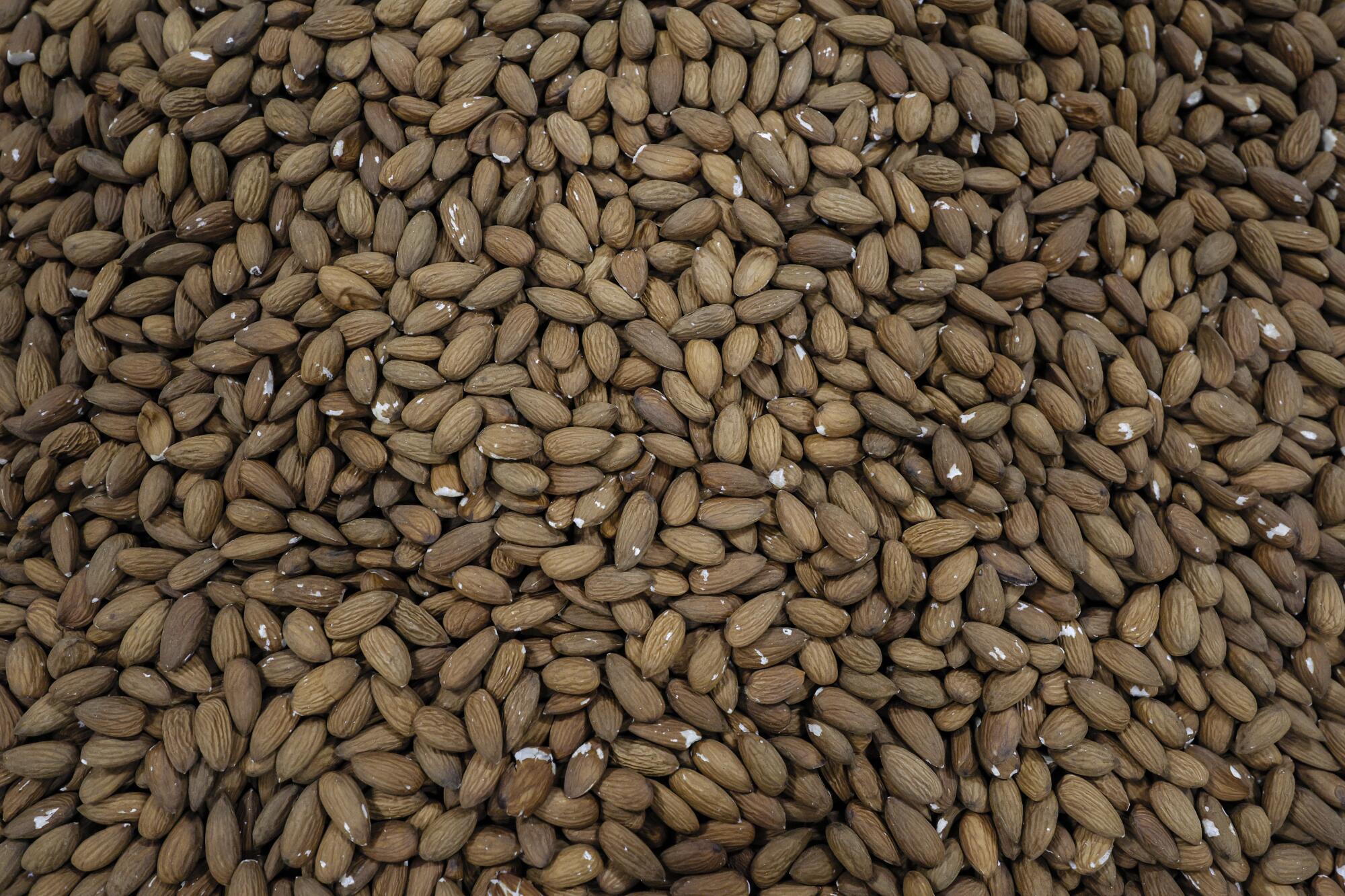
- Share via
MANTECA, Calif. — Almond producer David Phippen didn’t need to hear the latest predictions from agriculture economists to know that his industry was on the verge of losing its premier position in the global market.
He saw it coming during the COVID-19 pandemic in 2020, when oceanic carriers discovered they could make twice as many annual round trips — and higher profit margins — by sending empty containers back to Asia to pick up more goods for export instead of waiting in port here to be loaded with his almonds. Almond exports are down by about 13% this year, industry officials said.
“It’s all about money,” Phippen, 72, said, shaking his head in frustration on a recent hot and sticky morning. “After years of prospering together, foreign shipping vessels have decided to stop servicing us.”
Now, the powerhouse almond industry is in a pickle. Roughly 7,600 California farms produce 82% of the world’s almonds. But they don’t get paid until their product gets delivered in robust markets like the European Union, China, India and the United Arab Emirates.
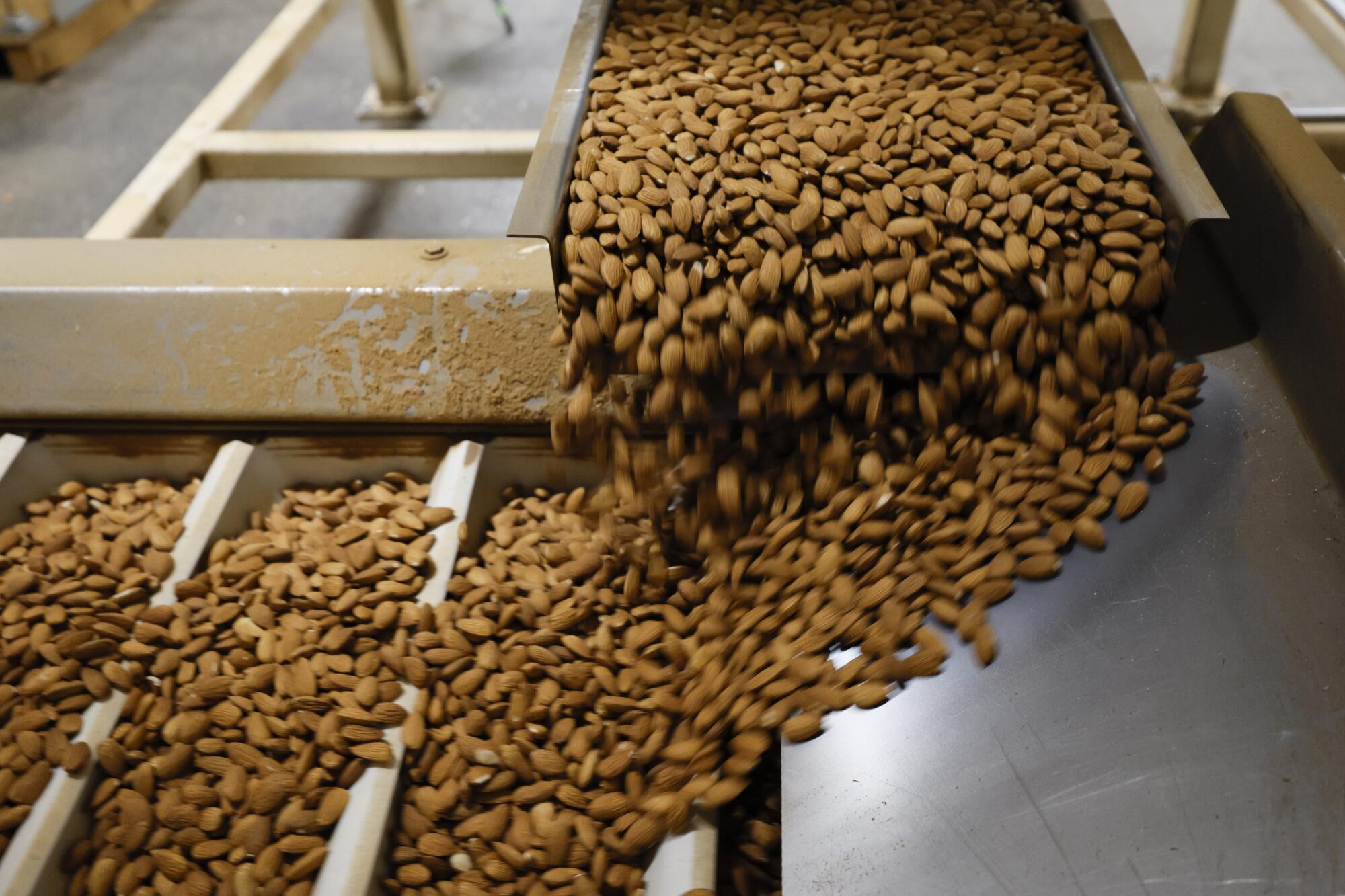
As a result, the prospect of harvesting 2.8 billion pounds this year — just shy of the 2.9 billion pounds in 2021 and the record 3.1 billion pounds in 2020 — has industry leaders both excited and worried. That’s because about 1.3 billion pounds of unsold almonds are still sitting in piles at processing and packing facilities.
The problem comes at a time when inflation and a historic drought are pushing the costs of production and water supplies to an all-time high, and the price of almonds has fallen to an all-time low of about $2 per pound.
It’s a sharp reversal for the industry after four decades of relentless expansion across 1.6 million acres in California’s agricultural Central Valley from Tehama County to southern Fresno County.
“We’re running into a delivery and cash-flow crisis,” said Aubrey Bettencourt, chief executive of the Almond Alliance of California. “From last September to February, the almond industry lost $2 billion in value — that’s a lot of money that’s not going into our communities.”
“If we can’t tackle this problem,” she added, “our products will be replaced with something else.”
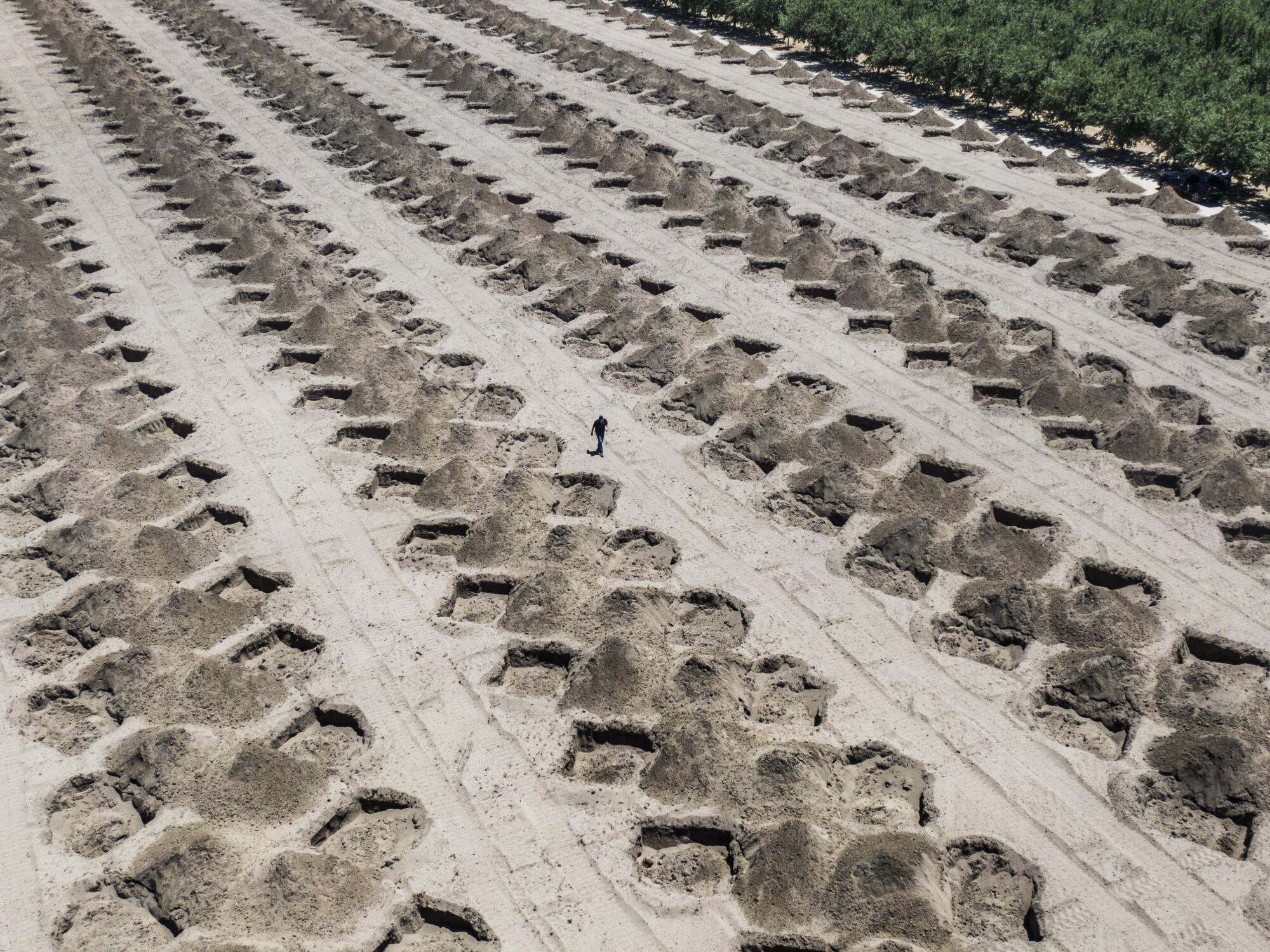
It’s a dilemma that David Phippen and his brother Scott, partners of Travaille & Phippen Inc., a family-owned growing, processing, packing and sales business in Manteca, Calif., know firsthand.
“The big question from customers around the world these days,” Scott Phippen, 68, said, “is this: When will we get our almonds?”
The bottleneck at the Port of Oakland, historically the major gateway for Central California dried fruits and nuts bound for international markets, is expected to drag on for months to come.
The good news, growers like to point out, is that the nutritious oval-shaped nuts have a shelf life of about two years.
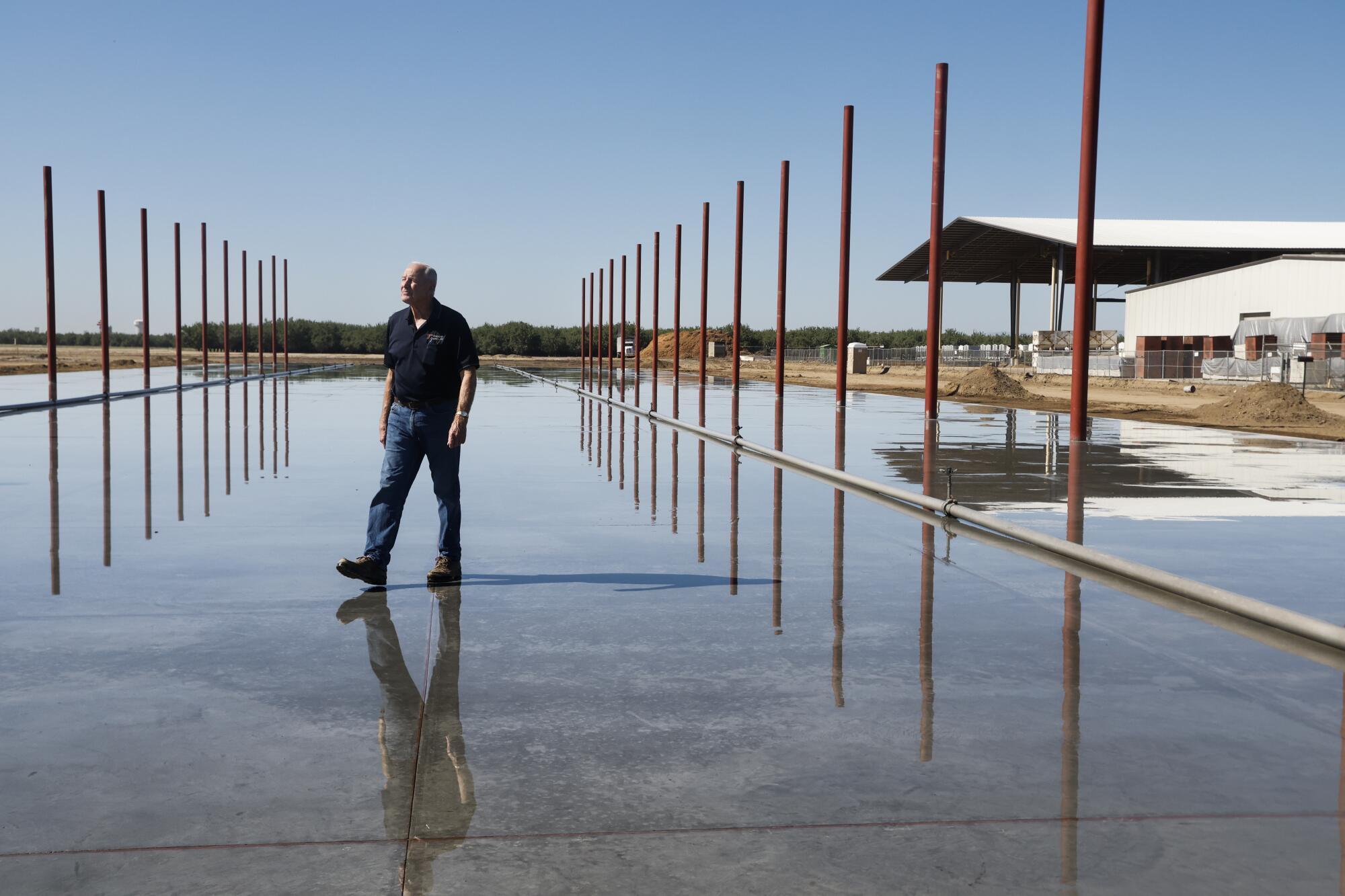
As part of an effort to avoid being overwhelmed by new crops expected to arrive in September, the Phippens are building a 40,000-square-foot warehouse, and recently paid about $800,000 for 3,000 new wooden storage bins.
Inside a nearby processing facility, workers wearing gloves and hairnets were inspecting rivers of almonds flowing along conveyor belts before they would be packaged for shipment.
“We have plenty of almonds,” David Phippen said. “The problem is getting them to people who will pay for them.”
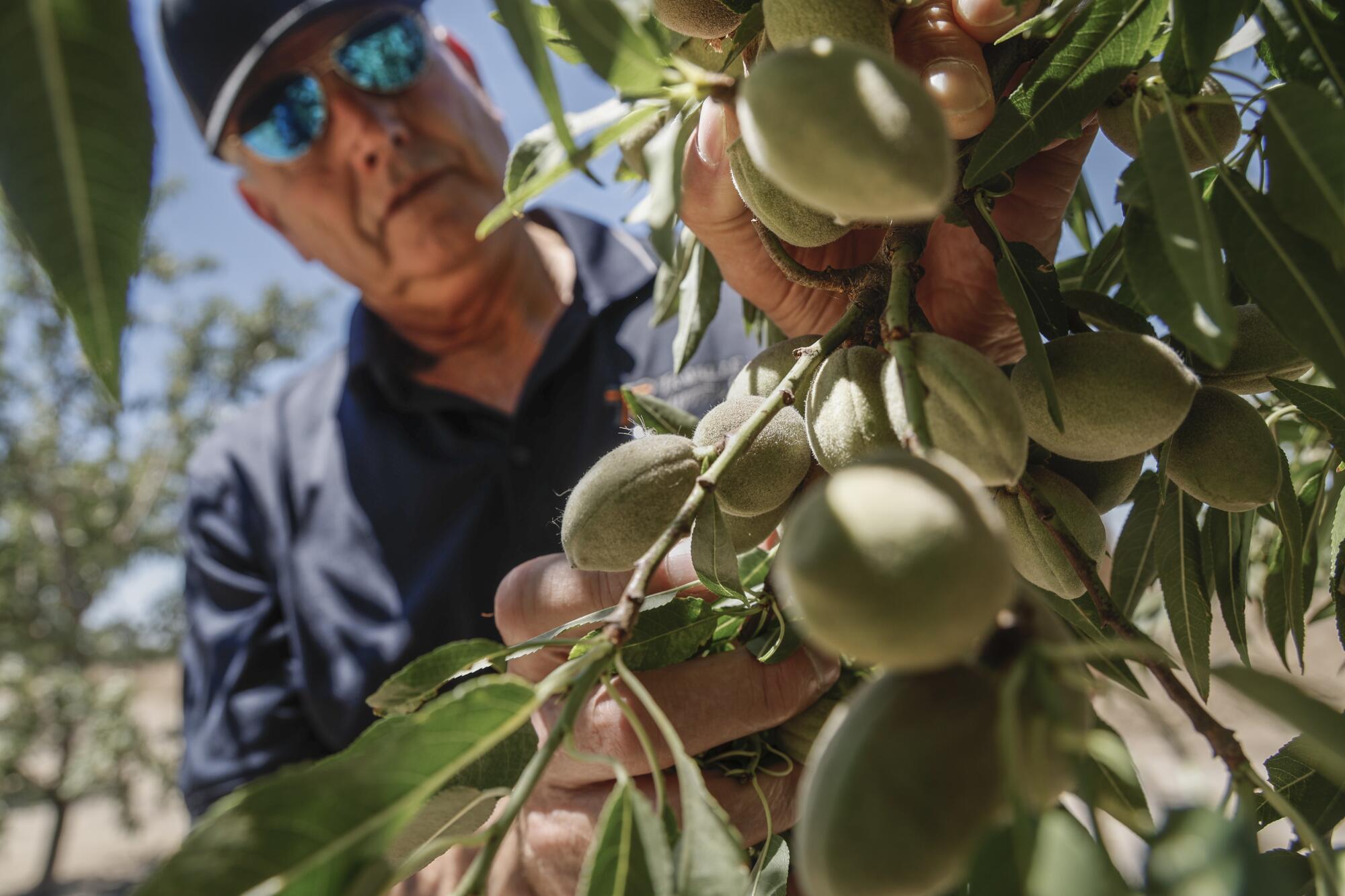
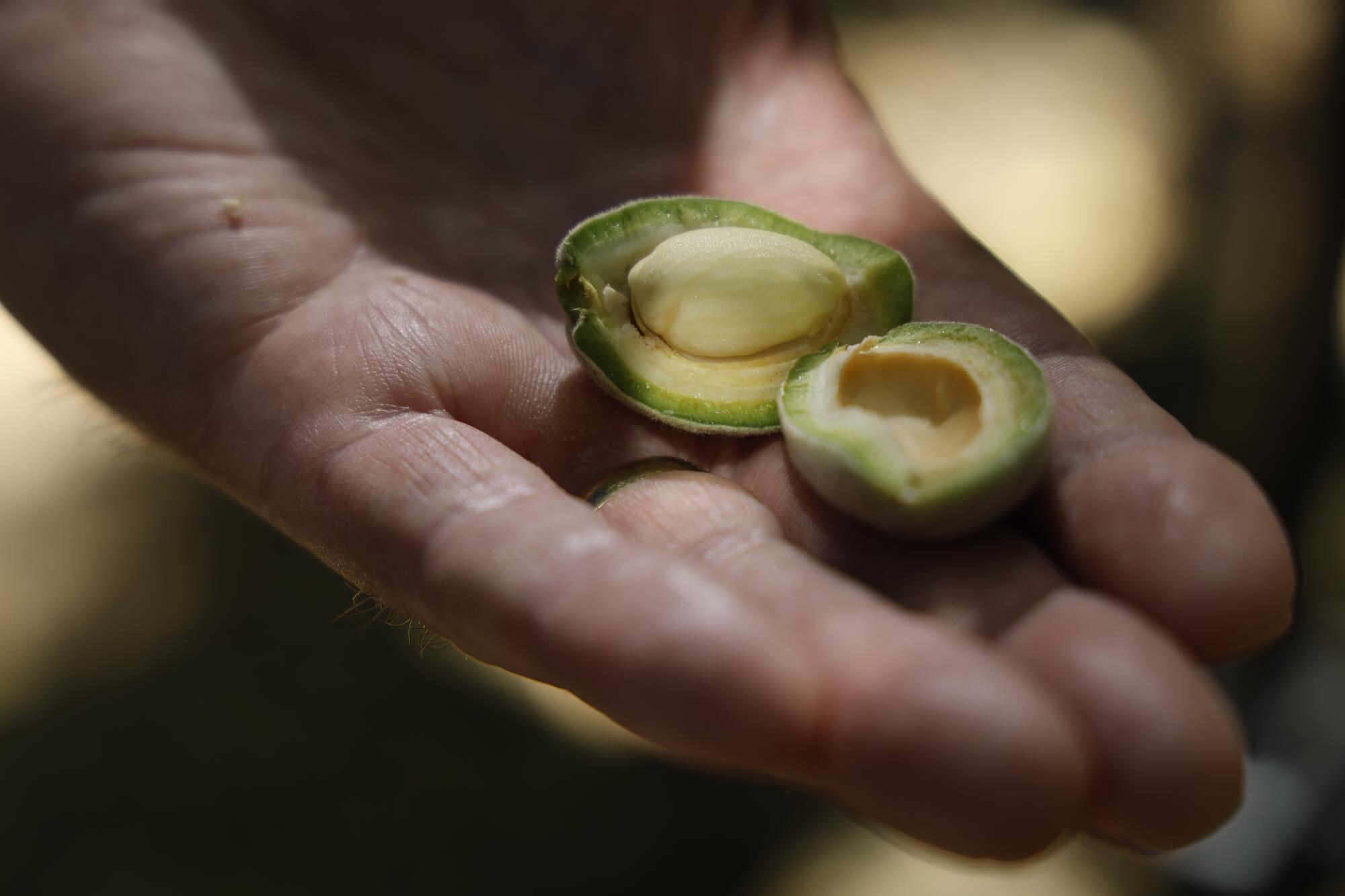
The crunchy nuts have come a long way since California pioneers in 1850 planted their first almond trees in Sacramento, Monterey and Los Angeles.
The nut didn’t come into its own as a snack product until 1968, when a cooperative persuaded American Airlines to buy Blue Diamond Smokehouse Almonds to give away as in-flight munchies.
Blue Diamond’s success soon lured other almond concerns into the snack market and opened the door to a galaxy of innovative products: almond butter, almond shaving cream, almond-flavored Champagne, high-protein almond milk, almond ice cream, candy and cookies, even almond oil suitable for sun bathing and frying fish.
Attracted by the product that doesn’t spoil and does not require much manual labor, almond growers planted 74,000 acres in the late 1970s.
Today the Golden State harvests the tree nut across a 500-mile stretch of farmlands that made almonds the No. 1 California agricultural export in 2021 at $4.7 billion — that’s three times more than in the 1990s.
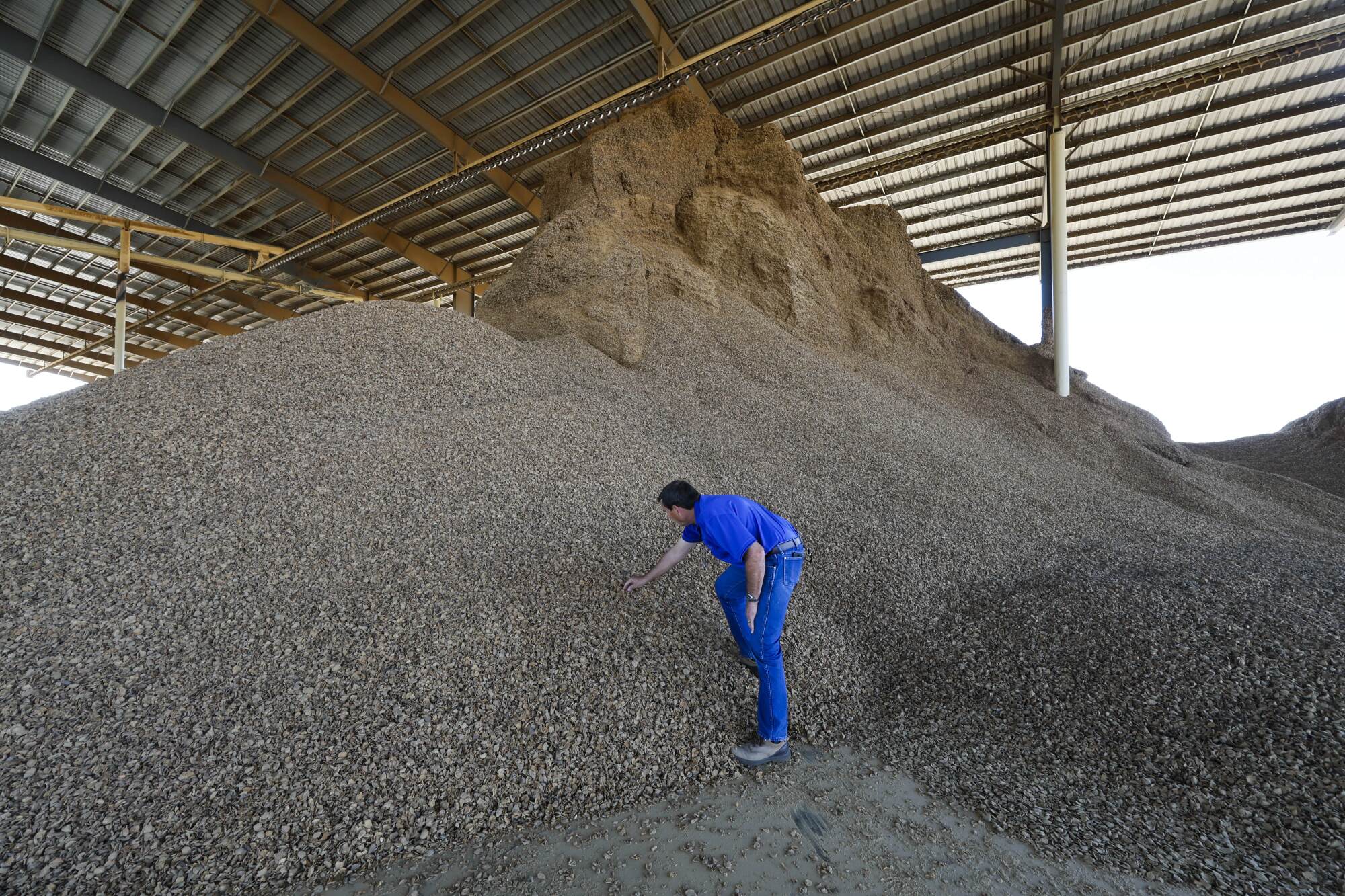
This year, with the state’s agricultural heartland struggling through a third year of drought, farmers are having to make tough decisions about abandoning orchards of the thirsty permanent crops that need year-round water.
The 2021 drought alone cost the California agricultural sector about $1.1 billion and nearly 8,750-full-time jobs, according to a recent analysis led by UC Merced researchers.
On another front, growers are seeking state and federal help in establishing new, more reliable shipping strategies. Proposals under discussion include bypassing the Port of Oakland altogether by having almonds and other agricultural products moved by rail to shipping companies along the U.S. Gulf Coast.
Last month, industry leaders partnered with railroad companies to create a small experimental “pop-up” agricultural terminal in the Los Angeles-Long Beach port complex.
“We have to go where there are boats that will move our products,” Bettencourt said. “So, it’s all aboard the new almond express trains rolling into L.A. harbor.”
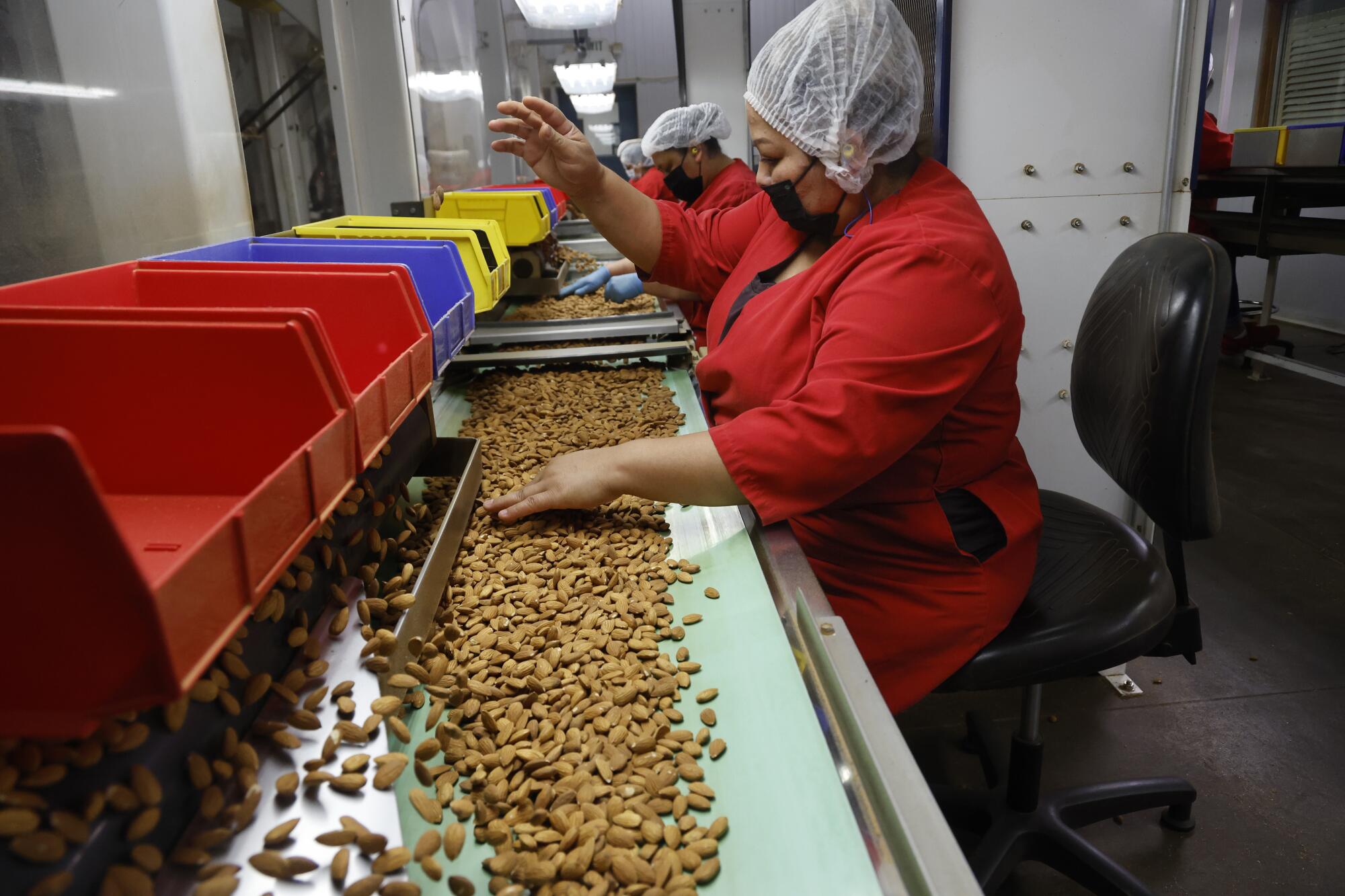
The challenges facing almond growers test the limits of compassion among environmentalists who have long criticized their industry’s outsized role in tapping the arid region’s water supplies. The industry responds that the water allows it to generate more than 100,000 jobs statewide and compete in a global market flooded with cheap foreign crops.
The debate is hardly new. Over the decades, as the Central Valley has grown into the most productive agricultural region in the world, environmentalists, growers and politicians have grappled with the issues of water and the size of water-intensive almond, pistachio, hazelnut and walnut farms.
According to industry reports, almond orchards make up less than 13% of the state’s total irrigated farmlands and use only 9% of the state’s agricultural water.
But at a time when Gov. Gavin Newsom is calling on Californians to voluntarily reduce water use by 15%, critics say, it still takes 1.1 gallons of water to grow an almond, and to grow a pound of almonds requires about 1,900 gallons of water.
“California’s climate is irrevocably changing amid the worst drought in recorded history,” said Jessica Gable, a spokeswoman for the nonprofit group Food and Water Watch. “We’re risking extreme water scarcity unless we transition to growing crops far less water intensive than almonds.”
David Phippen would not go that far.
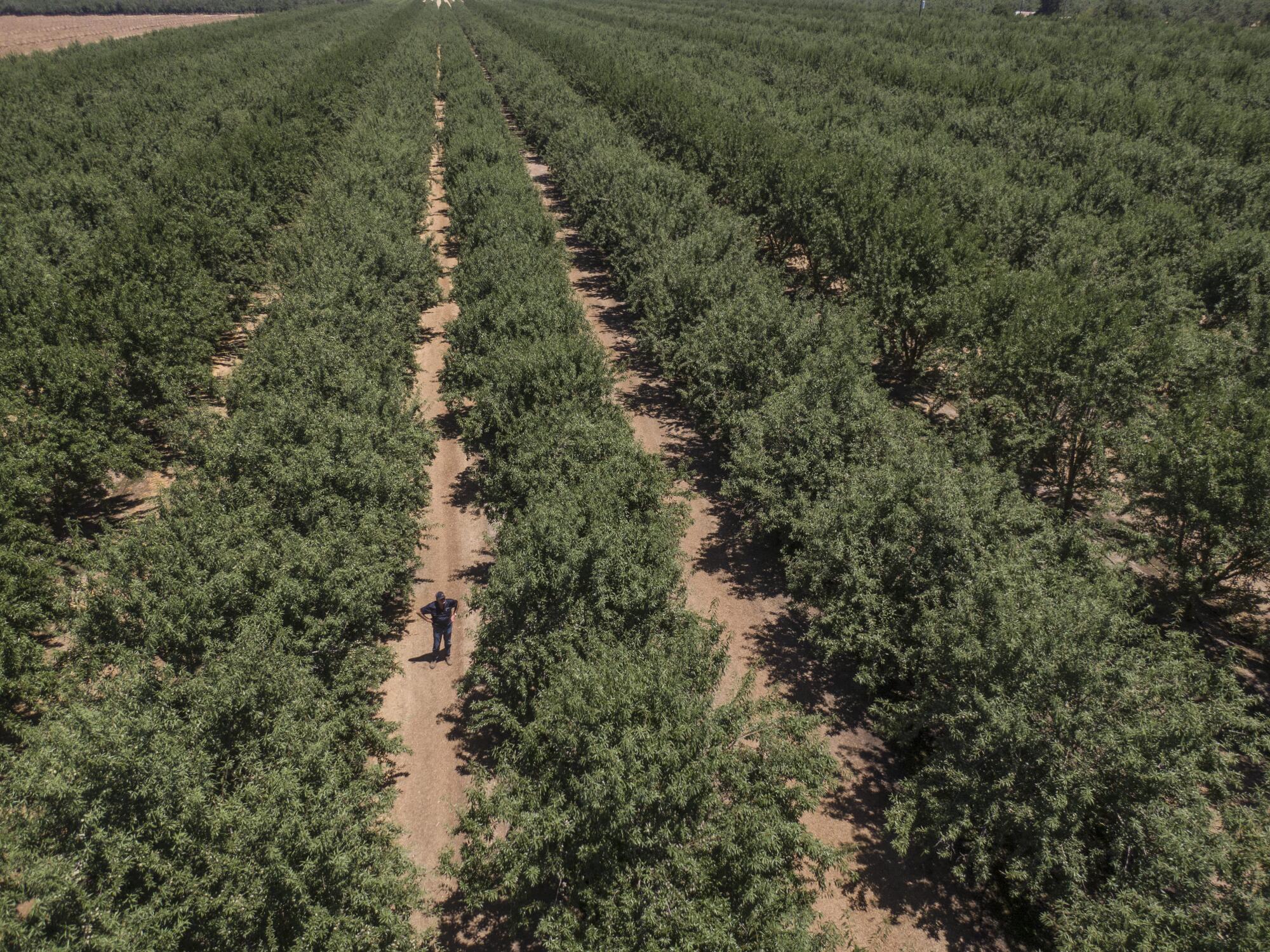
After all, global demand for almonds remains strong, especially at lower prices. So, he’d prefer to wait and see how the 2022 crop shakes out over the next several months.
“Call me optimistic,” he said, “but things actually seem to be getting a little better.”







